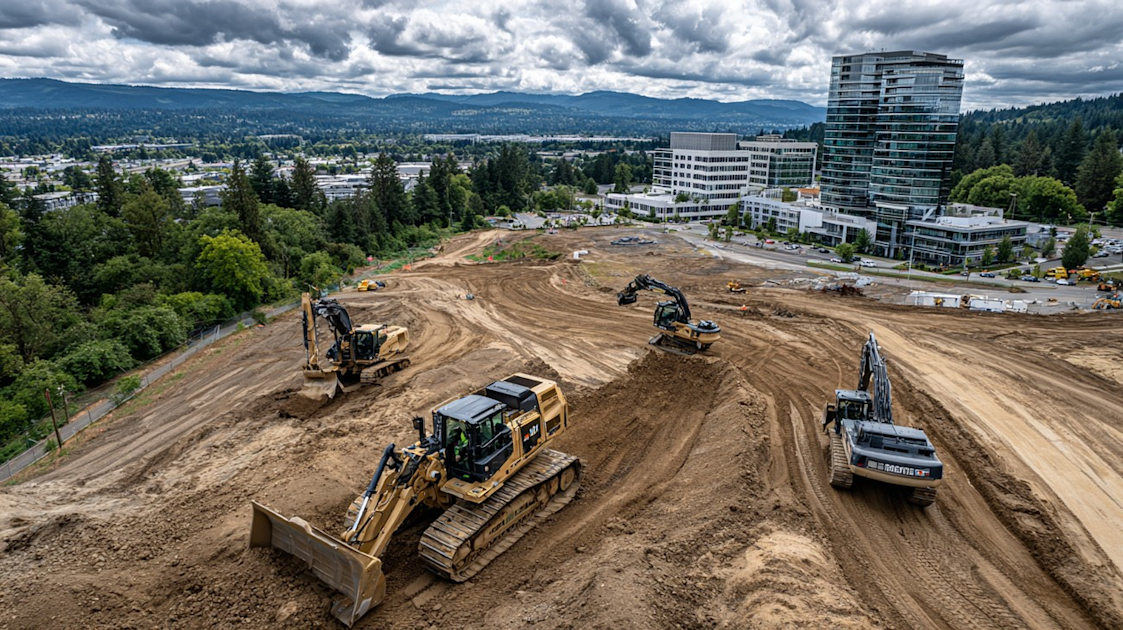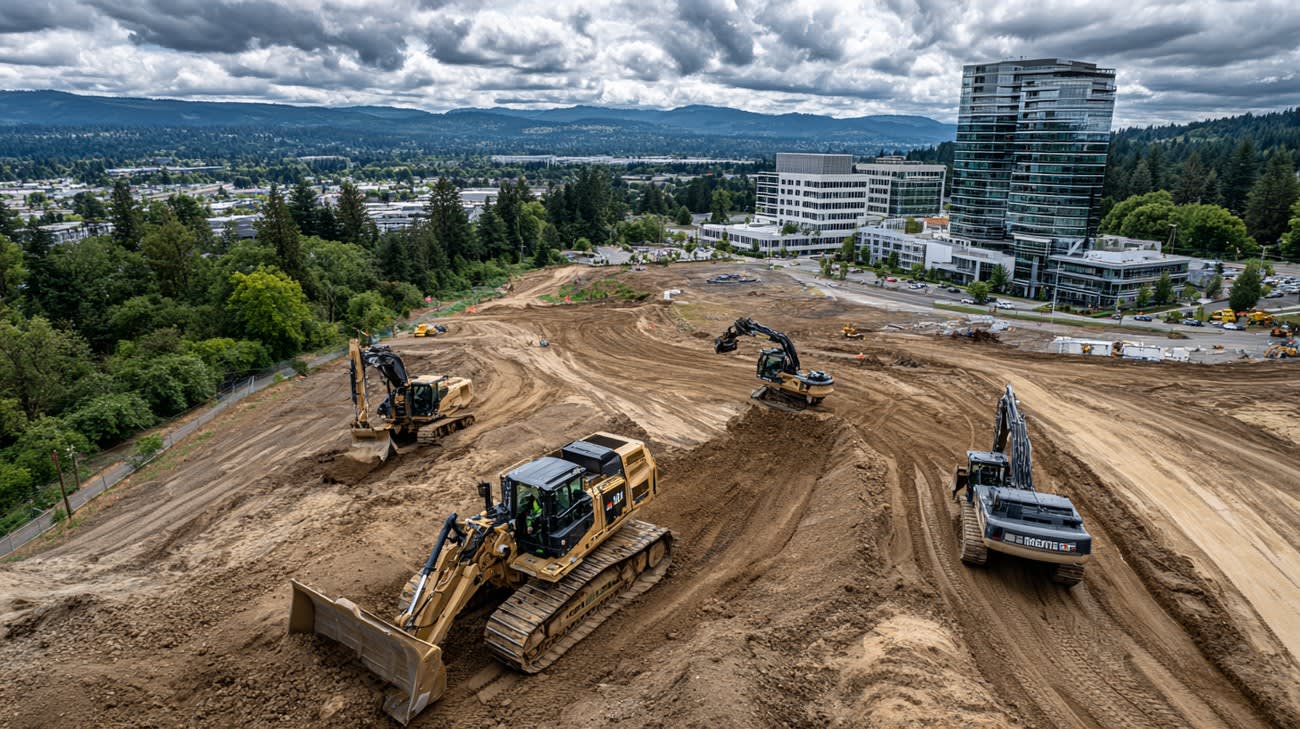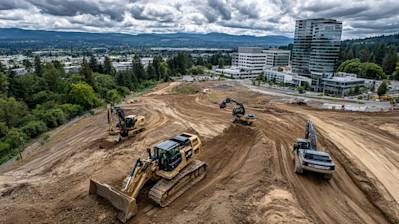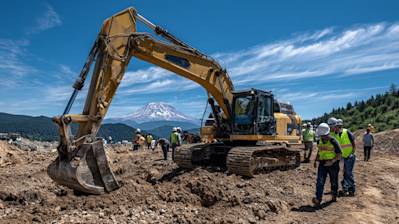Are you planning to build your dream house or perhaps kick-start a vast construction project? Whether you are a property owner or a construction company, you would agree that one critical step in construction that can't be overlooked is land grading. This is your comprehensive guide to understanding land grading, its importance, the process, equipment used, and the cost of carrying out this essential task.
The Basics of Land Grading
Land grading, also referred to as ‘grading in construction,’ is a process that involves adjusting the slope and elevation of the soil around a building. The primary role of land grading is ensuring that the foundation of a building is constructed on a leveled surface.
Why Land Grading Is Important
Land grading serves a myriad of essential purposes:
- Water Drainage: Grading prevents water from pooling around the building foundation, thereby safeguarding the building against potential water damage.
- Ground Stability: Grading ensures that the ground is stable enough to support the enormous weight of a building.
- Aesthetics: Grading also plays a vital role in landscaping making a piece of land appealing to the eye.
Understanding the Land Grading Process
Land grading is more than just leveling the ground. It takes a certified professional and heavy machinery to ensure that grading is properly done.
Preliminary Survey
This is the first step in land grading. A certified surveyor comes into the property to measure the slope and elevation. This is done using special devices like a GPS and a laser level to determine the amount of soil that will need to be removed or added.
Excavation
Once the survey is complete, the next step is excavation. This involves cutting out soil from higher areas and depositing it in lower regions. Heavy machinery such as excavators, bulldozers, and graders are used for this task.
Fine Tuning
After finishing the rough cut, it’s time for fine-tuning. This involves the use of more precise equipment like laser-guided systems. The goal is to ensure that the land is perfectly level to support the construction plan.
Equipment Used in Land Grading
Outlined are the key pieces of equipment often used in the grading process:
- Excavators: These are used for digging out soil in bulk and transferring it to another location.
- Bulldozers: These are more suited for pushing the soil around and spreading it across the site.
- Graders: This is the equipment that specializes in fine-tuning the land to achieve a level surface.
- Laser-guided systems: They play an essential role in ensuring precision during land grading.
All about Land Grading Cost
Indeed, land grading is an indispensable phase of your construction project, and like other facets of the project, it comes with its associated cost. The cost of land grading can vary greatly depending on several factors:
- Size of the land: Larger pieces of land demand more work, time, and resources, thus increasing the cost of grading.
- Slope of the land: The steeper the slope, the more work required to level the land, leading to higher costs.
- Presence of obstacles: Physical elements such as rocks, trees, and buildings can increase the complexity of the grading process hence affecting the cost.
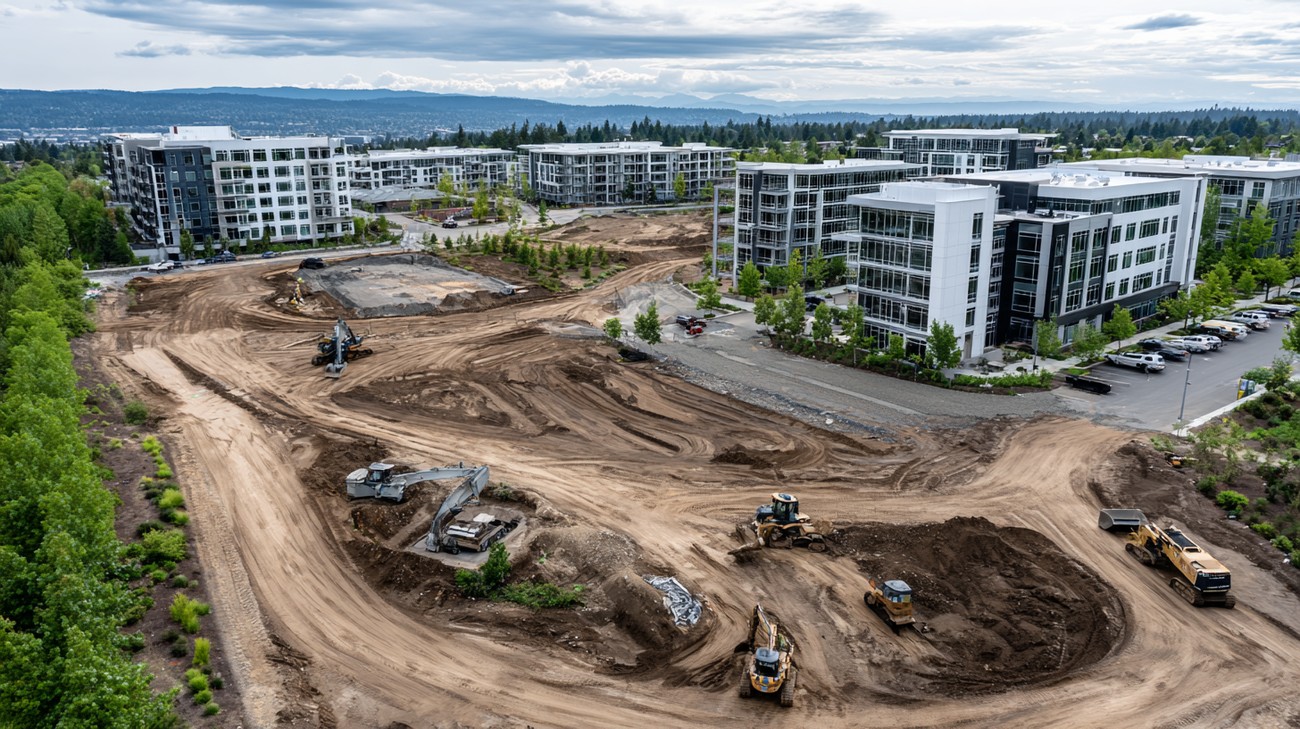
Frequently Asked Questions about Land Grading
How is Land Grading Done?
The land grading process begins with a thorough analysis of the terrain, including the existing topography and soil type. Heavy-duty construction equipment, like bulldozers or graders, are then used to scrape and move the soil, bringing high points down and filling low points to create a level or appropriately sloping surface.
What Defines a Good Land Grading?
A successful land grading project will effectively direct water away from structures, prevent erosion, and create a suitable base for construction or landscaping. The terrain should be level or properly sloped, without any obvious depressions that could pool water. Moreover, the final landscape must be stable, with the soil compacted efficiently to prevent future shifting.
What are the Types of Land Grading?
There are mainly two types of land grading - rough and finish. Rough grading involves shaping the land, removing large rocks and roots, installing necessary drains and creating the basic level. Finish grading, as the latter stage, ensures a smooth, compact, and precise level ideal for construction.
How Much Does Land Grading Cost?
The cost of land grading greatly depends on the size and complexity of the project. Other cost-contributing factors include local labor rates, the type of landscape you're working with (rocky, steeply sloping, etc.), amount of vegetation to be removed, or if any additional features, like a retaining wall, need to be installed. You would ideally want to get a quote from a reputable contractor who can assess your specific circumstances.
When do I Need Professional Land Grading Services?
When undertaking large projects or managing challenging terrains, it is crucial to ensure that land grading is handled professionally. A landscape that has been improperly graded can lead to several issues, such as water pooling, soil erosion, and unstable structures. If you would rather not take the risk, hiring a professional grading company would be the best course of action.
What Is the Relation Between Land Grading and Drainage?
Land grading plays a significant role in managing water flow across a property. By carefully planning and executing a grading project, you can channel excess water away from buildings and other structures, minimizing the risk of damage caused by excess moisture. This is particularly important in areas that experience heavy rainfall.
How Surgeons and Builders Relate with Land Grading?
Just as surgeons need a clean, precise, and well-prepared operating field, builders need a well-graded piece of land to create a solid foundation for any structure. Both professions require a high level of precision and careful preparation to ensure the successful completion of the task at hand.
Can I do Land Grading Myself?
While small grading tasks can be managed with DIY methods, most land grading projects require the expertise and equipment of professional grading services. The process involves more than just moving soil around; it requires an understanding of soil types, drainage systems, and relevant building codes. Doing it yourself may lead to long-term issues, particularly if you are preparing the land for construction or significant landscaping projects.
How Long Is the Land Grading Process?
The duration of a land grading project depends on several factors, such as the size and condition of the land, the intended use of the area, and the specific requirements of the project. A small, simple grading project could be completed in a few days, while large or complex projects can take several weeks or more.
What Is the Impact of Land Grading on the Environment?
Proper land grading can have a positive impact on the environment, helping to reduce soil erosion and support effective water management. However, it's important that grading projects adhere to local regulations and best practices to minimize disturbance to existing vegetation and wildlife habitats, prevent soil degradation, and protect water quality.

Pros of Land Grading
Enhances Drainage system
One of the significant benefits of land grading is its potential to significantly enhance your property's drainage system. ##
Prevents Water Accumulation
Land grading ensures that water flows away from your home, helping to prevent pooling or water accumulation that could lead to damage or water infiltration into your basement or foundation.
Reduces Soil Erosion
Graded land can also reduce soil erosion because it channels water away effectively. This is especially beneficial in areas prone to heavy rains or flooding.
Reduces Water-Related Issues
A good drainage system eliminates water-related problems such as significant water accumulation, stagnation and formation of marshy areas in your yard, which can cause a host of issues including breeding grounds for mosquitos.
Improves the Aesthetic Appeal of Your Property
Land that has been graded properly can significantly boost the aesthetic appeal of your property. ##
Provides a Level Ground
Land grading ensures that the ground is level and smooth. This not only enhances your property's beauty but also makes the land more functional and easier to maintain.
Enhances Landscape Design
A well-graded plot allows for enhanced landscape design. Sloped or uneven areas can be turned into terraced gardens, functional outdoor living spaces, or even swimming pools. Aesthetics can be greatly improved, contributing to the overall value of the property.
Boosts Property Value
Correct and strategic land grading has the potential to increase the market value of your property. ##
Makes the Land More Usable
An uneven terrain can limit the usability of your land. With land grading, you get a level surface that can be used for various activities such as gardening, building structures, or even outdoor games.
Attracts Potential Buyers
A well-maintained, neatly graded property with minimal issues related to drainage or erosion will naturally attract potential buyers and tenants, thus increasing the value of your property.
Cons of Land Grading
Requires Significant Investment
Land grading is not a simple task. It requires specialized machinery and skilled professionals, which comes with its cost. ##
High Initial Costs
The actual cost of grading your land can vary depending upon the size of your property, the extent of the grading required, and the local rates for such services. This could potentially include the cost of labor, machinery, and any permits required.
Potential Additional Costs
Aside from the initial costs, there may also be additional costs involved such as the hauling away of excess soil, or the purchase and installation of additional topsoil or landscaping once the grading is complete.
Can Lead to Unforeseen Problems
While grading can rectify existing issues with your land, it can also potentially lead to new problems. ##
Can Damage Existing Landscaping
If not done carefully, the grading process can damage existing trees, shrubs, and other landscaping elements.
Can Affect Surrounding Properties
Improper grading can lead to water runoff issues, which may impact neighboring properties and result in disputes or legal issues if it is not done appropriately.
It is Time-Consuming
Good land grading is not a project that can be completed in a few hours. Depending on the size and condition of your property, it can take a few days to weeks. ##
Delays in Other Projects
If you are planning other activities such as constructing a building or setting up a garden, they would have to wait until the grading process is complete.
Needs Proper Timing
The grading process cannot be done at any time of the year. To ensure the best results, it needs to be carried out during a particular season, which could mean waiting for the right time.
Requires Periodic Maintenance
Land grading is not a one-time job. It requires periodic maintenance to ensure its effectiveness. ##
Occasional Re-Grading
For optimal benefits, your land may need occasional re-grading, especially after significant rainfall or flooding. This again involves time, effort, and cost.
Risk of Land Becoming Uneven
Without appropriate maintenance, graded land can become uneven over time due to natural elements, which may cause the recurrence of earlier issues like poor drainage.

Myths and Misconceptions around Land Grading
Land grading, an integral aspect of construction and landscaping projects, often gets misinterpreted. Therefore, this section addresses myths and misconceptions surrounding land grading.
Myth 1: Land Grading Isn’t Necessary for All Construction Projects
One common misconception is that every construction project doesn't require land grading. In truth, nearly all construction projects demand it to some degree.
Fact
Land grading is an essential step to ensure a flat and sturdy surface for building. It helps prevent damage due to water runoff, soil erosion, and stability issues. Even if the site appears flat to the naked eye, subtle slopes and dips can cause significant problems down the line.
Myth 2: Any Contractor Can Do Land Grading
Another widespread misconception is that any contractor or builder can handle land grading. However, land grading is a specialized job that requires specific skills and equipment.
Fact
Land grading should ideally be performed by professionals who have ample experience and the right equipment. Improper grading can lead to long-term issues like poor drainage, basement flooding, or structural damage.
Myth 3: Land Grading Only Involves Removing Soil
Many people think that land grading is about merely removing soil. However, it's more nuanced than just digging up dirt.
Fact
Land grading involves additional activities such as leveling, sloping, and contouring the land. The goal is to create a smooth, leveled surface suitable for construction while ensuring proper drainage.
Myth 4: Grading Isn’t Required for Drainage
People often underestimate the importance of grading in creating effective drainage systems.
Fact
Proper grading can help prevent the pooling of water and direct the flow away from structures, roads, and critical areas of your property, reducing the potential risks of water damage or flooding.
Myth 5: Land Grading Is Harmful to the Environment
There's a myth that land grading can be harmful to the environment by disrupting natural habitats and causing soil erosion.
Fact
When done correctly, land grading can benefit the environment. It can reduce erosion by improving water flow and even create habitats for local flora and fauna. Environmental concerns are often addressed in the planning phase of grading.
Myth 6: You Don’t Need a Permit for Grading
Some people believe they can grade their land without a permit.
Fact
In many instances, a grading permit is required to ensure the work adheres to local regulations about water flow, erosion control, and property boundaries. Not having a permit can lead to fines and required corrective measures.
Myth 7: Grading Can Be Done At Any Time of the Year
People often think that grading can be carried out at any time of the year.
Fact
Although grading can be completed in any season, professionals usually recommend grading during drier months. Doing this during wet periods can lead to soil compaction and other issues.
Myth 8: Level Ground Is Always the Goal
A common misconception is that the objective of grading is to create a perfectly flat piece of land.
Fact
While leveling is often a part of the process, grading also involves creating slopes for better drainage, or contours for aesthetic or functional reasons. The ultimate goal of grading is to maximize the usefulness of the land for its intended purpose.
These myths demystified should provide a clearer understanding of what land grading entails and its importance. It's a vital aspect of construction and landscaping and mustn't be underestimated or bypassed due to misguided information.
Summary
Land grading is an essential process that contributes to the integration of a balanced ecosystem. It's the hero behind the scenes that ensures the sustainability of our constructions, our agricultural activities, and even helps prevent soil erosion. From a larger perspective, land grading holds pivotal value in maintaining the earth's natural habitat and keeping it viable for the generations to come.
On a more practical level, land grading isn't just about earth-moving. It's a science and an art conjointly, dealing with the accuracy of angles, precise leveling, and also the aesthetic appeal of a landscape. Whether it’s for enhancing the productivity of farmlands, or creating an excellent base for our construction projects, many tend to underestimate the skill and expertise this process demands.
When it comes to the monetary aspects of land grading, many might view it as an additional expense. However, a well-graded parcel of land can save substantial money in the long run. It promotes efficient water drainage, minimizes risks of water damage and ensures the longevity of your property. So next time, when you see a leveled ground, never forget the brilliance of land grading that underlies it.
About Build Outdoor Space Solutions
Welcome to Build Outdoor Space Solutions! Nestled in the heart of Vancouver, WA, we take pride in being your go-to partner for transforming outdoor spaces. With a team of highly skilled, creative builders, we're passionate about bringing your dream outdoor spaces to life – be it a serene patio, a family-friendly deck, or a lush garden. What sets us apart from the rest? We focus on sustainable, high-quality materials and aim to strike the perfect balance between practicality and aesthetics. Our end goal is to create an outdoor haven for you and your loved ones to create, recreate and cherish life’s most beautiful moments, all year round! With Build Outdoor Space Solutions, every project is a journey we treasure and share with you. We can't wait to reinvent your outdoor space!

